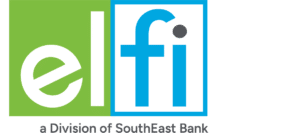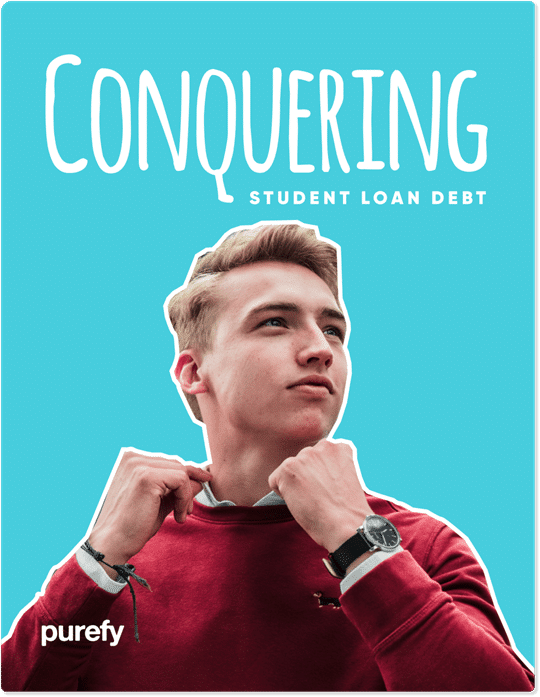Federal student loan payments are on pause until Summer 2023, so it’s time to start thinking about your plan for paying off your debt. Paying off federal student loans can be a daunting task, but knowing all of your options can help you narrow down which approach you want to take.
First, you’ll want to establish your goals, then take a look at each method individually. Depending on the situation, you may use just one or combine multiple approaches to make the most of your strategy.
If you’re wondering how to pay off federal student loans, here’s everything you need to know.
Determine your goals for paying back government student loans
Start by thinking about what exactly you want to do with your federal student loans. Here are some of the more common goals borrowers may have.
Save money
It’s possible to achieve this goal in many different ways, but depending on your situation, it may not be feasible, at least not yet. For example, while refinancing your student loans can help you save money, that option is accessible for everyone.
If you’re not in a position right now where you can save money on your student loans, consider working toward another goal until you’re ready. Depending on your approach, you could end up saving hundreds or even thousands of dollars in interest.
The 2 Best Companies to Refinance Student Loans
Our Top-Rated Picks for 2024 Offer Low Rates and No Fees

Faster payoff
This goal is specifically designed for people who can afford higher monthly payments than what they’re paying right now. It may be a lofty goal for some, but it’s worth considering, even if your situation makes it difficult right now.
With a faster payoff, you’ll not only be paying off federal student loans early — you’ll also save money on interest, freeing up that monthly cash flow for other financial goals and lifestyle needs.
Lower monthly payments
If you’re struggling to keep up with your monthly payments, this may be your top priority until your financial situation allows you to focus on other student loan goals.
Fortunately, there are several options available to lower your monthly payments. In the case of refinancing, it could even still result in less interest paid overall.
Simplify student loan payments
Student loans are disbursed once a year, so it’s possible that you’ve received loans from more than one servicer or lender. Unfortunately, this can make paying federal student loans more complicated than is necessary.
While it may not be your only goal, simplifying your payments can make your life and your student loan repayment strategy easier.
Get help with repayment
Opportunities to get help with paying back federal student loans are increasing, either through student loan forgiveness programs or through student loan repayment assistance programs.
Depending on your career path or your employer, you may be able to get help paying back some or all of your federal student debt. Just be sure to weigh all of your employment options — while getting help with your student loans is a good thing, some other career paths may offer more overall value in the long run.
Make the Grace Period Work for You
With federal student loans, you’ll have a six month grace period after graduating where no loan payments are required. However, if you find a job right after graduating, consider making payments on your loan to save on interest and pay down the principal balance of your loans.
Our favorite options for paying back federal student loans
There are a lot of different ways you can pay back government student loans. As you prepare for monthly payments to resume, consider how these top approaches can fit with your goals and your current financial situation.
Student loan refinancing
Student loan refinancing is the process of replacing one or more existing student loans with a new one through a private lender. Refinancing federal student loans could provide you with a number of benefits:
- Lower interest rates: Depending on your creditworthiness, you may be able to secure a lower interest rate than what you’re paying right now. Even if you extend your payment term a bit, you could still potentially save hundreds or thousands of dollars on interest over the life of your new loan.
- Reduced monthly payments: If you can get a lower interest rate, a lower monthly payment can come automatically, depending on what your new repayment term will be.
- More flexibility with your repayment plan: With federal student loans, the standard repayment plan is 10 years, then the rest are between 20 and 30 years. If you want a bit more flexibility to shorten your federal student loan term length or get a payment that’s better tailored to your budget, student loan refinance lenders offer terms ranging from five to 25 years.
- One monthly payment: You don’t necessarily have to refinance all of your federal student loans, but doing so would result in just one simple monthly payment going forward.
That said, there are also some drawbacks to refinancing federal student loans. Particularly, you’ll end up losing access to your federal loan benefits. This means you’ll no longer qualify for loan forgiveness programs, and you may not be eligible for certain student loan repayment assistance programs offered by government agencies.
Additionally, you won’t be able to get on an income-driven repayment plan, and private lenders typically offer less generous deferment and forbearance options.
Read our post on the pros and cons of refinancing federal student loans if you need help weighing your options.
See How Much You Can Save
View Details
Collapse
Step 3: See How Much You Can Save
$15,310
Lifetime Interest
Savings
$1,018
New Monthly
Payment
$128
Monthly
Savings
| Current Loan | New Loan | Savings | |
|---|---|---|---|
| Rate | 6.7% | 4.2% | 2.5% |
| Lifetime Interest | $37,520 | $22,210 | $15,310 |
| Monthly Payment | $1,146 | $1,018 | $128 |
Like what you see? Check your actual prequalified rates from the industry’s top lenders in just 2 minutes or less.
Federal loan consolidation
If you don’t want to lose access to federal student loan benefits but want to simplify your student loan payments, a Direct Consolidation Loan can help you accomplish your goal.
Federal loan consolidation works similarly to refinancing in that you replace one or more existing loans with a new one. Some of the benefits of Direct Loan Consolidation include:
- Potentially opt for lower monthly payments: Federal consolidation loans have repayment terms as long as 30 years, giving you the chance to reduce your monthly payments to a more manageable level, depending on your budget.
- Gain access to certain programs: Depending on which loans you currently have, you may not be eligible for certain forgiveness programs and income-driven repayment plans. This is particularly true for Parent PLUS Loans, Federal Family Education Loan (FFEL) program loans and Perkins Loans. By consolidating, you may be able to access more benefits than you had before.
- Choose your servicer: When you consolidate your federal loans, you can choose which loan servicer you want to work with. This can be helpful if you’ve had a bad experience with one of the servicers you currently work with.
- Get out of default: If your federal loans are in default, you can use consolidation to remove the default status if you make three consecutive, voluntary, on-time, full monthly payments before consolidating and agree to get on an income-driven repayment plan. Just keep in mind that consolidating won’t remove the negative mark from your credit report. If you want the default removed, you’ll need to go through the rehabilitation process, which is a bit more difficult.
However, there are some disadvantages to the federal loan consolidation program, too. For example, your new interest rate will be the weighted average of all of your consolidated loans’ interest rates, rounded up to the nearest one-eighth of a percent. In other words, consolidating won’t save you money.
Also, if you have Perkins Loans, make sure you check your eligibility for Perkins Loan forgiveness before you consolidate. If you consolidate, you’ll be disqualified.
Federal student loan repayment programs
If you don’t qualify for refinancing or you want to keep your federal loans where they are, there are other repayment options that can help you reduce your monthly payments. Keep in mind that none of these will shorten your repayment below 10 years, so if you want to pay off your debt more quickly, you’ll need to choose another option.
Here’s a summary of the federal student loan repayment plans that are available beyond the standard 10-year plan.
Graduated repayment plan
Payments start out low and increase over time over 10 years. If you have a Direct Consolidation Loan, your repayment term will be within 10 to 30 years.
Extended repayment plan
If you have more than $30,000 in student loan debt, your monthly payments may be fixed or graduated. In either case, your repayment plan will be extended to 25 years.
Revised Pay As You Earn (REPAYE) plan
This income-driven repayment plan reduces your monthly payment to 10% of your discretionary income — the difference between your annual income and 150% of the federal poverty guideline for your state of residence and family size.
It’ll also extend your repayment term to 20 years if all your loans are undergraduate loans or 25 years if you have graduate or professional study loans.
After you complete your repayment term, any remaining balance will be forgiven.
Pay As You Earn (PAYE) plan
If you’re a new borrower on or after October 1, 2007, and your loans were disbursed on or after October 1, 2011, you may qualify for the PAYE plan.
This plan reduces your monthly payment to 10% of your discretionary income (the same calculation as the REPAYE plan) and extends your repayment term to 20 years. After that time period elapses, any remaining debt will be forgiven.
Income-Based Repayment (IBR) plan
If you have high debt relative to your income, you may qualify to get on the IBR plan. With this income-driven repayment plan, your monthly payment will be reduced to 10% or 15% of your discretionary income (same calculation as PAYE and REPAYE), depending on when your first loans were disbursed.
The repayment term will be extended to 20 or 25 years, depending on when your first loans were disbursed, and any remaining balance at that time will be forgiven.
Income-Contingent Repayment (ICR) plan
This plan is available to all federal loan borrowers, but it’s unique in that it’s the only one you can get on if you have Parent PLUS Loans (and you have to consolidate your loans to qualify).
The ICR plan reduces your monthly payment to the lesser of 20% of your discretionary income — the difference between your annual income and 100% of the federal poverty guideline for your state of residence and family size — or the amount you would pay on a fixed payment plan over 12 years. If you still have a balance after 25 years, it’ll be forgiven.
Bigger monthly payments
Regardless of what payment plan you’re on or whether or not you chose to refinance or consolidate your federal student loans, a timely approach is to simply add some money to your payments every month.
Even if you can only afford a little, it can add up over time. For example, if you had $30,000 in student loans with a 6% average interest rate and a 10-year repayment plan, your monthly payment would be about $333.
If you were to add an extra $25 to your payment every month, you’d cut almost an entire year off your payment plan, and you’d save roughly $1,000 in interest.
The more you can afford to pay every month, the faster you’ll eliminate your debt and the more money you’ll save on interest charges.
Can I Apply for a Loan Forgiveness?
Depending on your career path, you may qualify for one of the few student loan forgiveness programs. More specifically, there are programs available for teachers and other public servants who work for a government agency or qualified non-profit organization. Contact your federal loan servicer to determine if you’ll need to complete an application for loan forgiveness.
Alternatively, you could qualify for student loan repayment assistance. There are government programs on both the federal and state levels for people who work in teaching, healthcare, science, public defense, the military and more.
Additionally, the number of private employers that offer student loan repayment assistance as an employee benefit is increasing. If you’re looking for a new job, consider the potential ways you can leverage your career to get help paying down your student loans.
It may not eliminate your loans altogether, but it can make them more affordable. Just keep in mind that some programs may require you to keep your federal loans, so refinancing them may cause you to lose eligibility.
Windfall payments
Whether or not you’re making additional monthly payments toward your federal student loans, you could also add other small windfalls you receive throughout the year, such as a tax refund or a performance bonus from your employer.
You don’t necessarily have to put all of the money you receive toward your student loans, but it can help to use at least some of it for the purpose of paying down your college debt.
Debt avalanche or debt snowball method
The debt avalanche method is a tried-and-true approach to paying off debts. You’ll start by paying the minimum required on all of your debts, then put additional monthly payments toward the loan with the highest interest rate.
Once that debt has been paid in full, you’ll take the amount you were putting toward that loan and add it to your minimum payment on the loan with the next-highest interest rate. You’ll continue this process until all of your loans have been paid in full.
The debt snowball method uses the same approach, but instead of targeting the loans with the highest interest rates first, you’ll focus on the accounts with the lowest balances. You won’t save as much in interest with this strategy, but it can help you gain some wins early on as you pay off lower-balance loans.
Obviously, these approaches work only if you have multiple loans, so you can’t use them if you refinance or consolidate your loans into one new one.
But if you can afford extra payments and you’re fine with keeping multiple loans and monthly payments, this can be a great way to accelerate your debt repayment and save money on interest.

Free eBook: How to Conquer Student Loans
Free eBook: How to Conquer Student Loans

Is refinancing right for your federal student loans?
Refinancing your federal student loans can open up some opportunities to save money, pay off your debt faster and get some more flexibility than you currently have. However, there are also some downsides to getting rid of your federal loan debt.
If you think that losing access to federal student loan benefits might impact you negatively in the future, it might not be worth it to refinance your loans with a private lender, even if it can save you some money. There’s no way to reverse the process once it’s been completed, but you can always refinance at a later date when you know you won’t need federal loan benefits.
It’s also important to consider that many of the top benefits of refinancing are reserved for people with great credit and high incomes. While you can get approved with a credit score in the mid-600s and an annual income of $24,000 or more, there’s no guarantee that you’ll be able to secure a low enough interest rate to make refinancing worth it.
According to student loan statistics collected by Purefy, student loan borrowers who refinance have an average FICO score of 774 and an average annual income of $98,156. That’s not to say you need those levels to obtain a low enough interest rate to make refinancing worth it, but you’re much more likely to get the terms you’re looking for.
If you don’t qualify on your own, you can get a cosigner to help improve your chances of getting approved with favorable terms, but make sure you talk to your cosigner about their responsibility to pay if you can’t and how it might impact their credit to have the loan on their credit reports.
With all this said, it’s crucial that you take the time to think carefully about your options, including the advantages and disadvantages of each before you make a decision. While waiting to refinance may result in a higher interest rate — interest rates are set to increase in 2023 as the Federal Reserve is rumored to increase its federal funds rate, which impacts student loan interest rates — it could give you the time to make the best decision for you.
How to compare the lowest student loan refinance rates
Even if you haven’t decided that refinancing is right for you, shopping around and comparing student loan refinance interest rates can help you make an informed decision on which path to pursue with your student loan debt.
Student loan refinance lenders typically allow you to view rate quotes without submitting an official application. This prequalification process uses a soft credit check, which won’t impact your credit score. The quote won’t necessarily be what you get after a hard credit check, but it can still help you compare offers and decide which lender you want to move forward with.
Instead of going through the prequalification process with individual lenders, consider using Purefy’s rate comparison tool to get quotes from multiple lenders in one place. It’ll save you time and make it easier to compare offers side by side.
As you compare, though, make sure you’re comparing fixed rates with fixed rates and variable rates with variable rates. Variable interest rates are more appealing to lenders because they can fluctuate over time. This is why they tend to start out lower than fixed interest rates. But as market rates increase, that means you may end up paying more in interest than if you were to stick with a fixed rate.
How to choose the right student loan refinance offer
Comparing interest rates is critical to helping you narrow down your list of refinancing options, but it’s far from the only factor to consider.
If you want to get the best student loan refinance offer, look at other features, such as the repayment term and monthly payment, interest rate discounts, cosigner release options, forbearance and deferment plans, member benefits, customer satisfaction and more.
As you look at each offer holistically, it can give you a better idea of which lender can provide the best fit for you.
Once you’ve selected your lender, though, go back to comparing all of your repayment options to make sure it’s the right move for you. In addition to considering your goals, you’ll also want to consider your current financial situation and what might happen if your finances don’t turn out the way you wanted them to.
With all of this in mind, the important thing is that you thoroughly research the different approaches to determine the best way to pay back federal student loans for your financial situation and long-term goals.



















